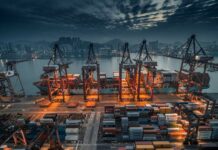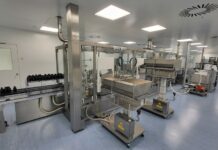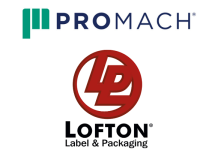Supply chain optimization for the safety of pharmaceuticals
As summertime temperatures increase, it becomes more crucial to ensure the safety of pharmaceutical items. Elevated temperatures have the potential to greatly impact the quality of products, which might have detrimental effects on patient safety and adherence to regulations. As such, one of the most important components of every pharmaceutical company’s strategy is the optimization of the cold chain supply. In order to maintain the highest standards of medicinal product safety, this article addresses the difficulties that organizations confront, the significance of cold chain management in the pharmaceutical supply chain, and process improvement recommendations. In order to ensure patient safety and regulatory compliance, we will also examine certain standards and laws regulating pharmaceutical logistics.
Cold Chain Supply Management’s Critical Role in the Pharmaceutical Industry
It is important to store and transport pharmaceuticals in areas with meticulous temperature, humidity, and other environmental control. For patient safety, these products often need to be used within certain temperature ranges in order to maintain their effectiveness and quality. If the proper conditions aren’t maintained, the product may deteriorate and become hazardous or ineffective.
Normal Ranges of Temperature:
- Cold Chain Products: These need to be frozen at -18°C or below, or refrigerated between +2°C and +8°C.
- Products with Controlled Room Temperature (CRT): A lot of medications need to be kept between +15°C and +25°C in room temperature storage.
- Warm Chain Products: Depending on their unique stability characteristics, certain biologics and specialty medications may need to be kept at temperatures as high as +30°C or even higher.
The product’s temperature sensitivity, the length of the trip, the surrounding environment, and any unique regulatory requirements—such as those set out by the International Safe Transit Association (ISTA) or local regulatory bodies—all have a role in the packing and transportation techniques that are used.
Crucial Actions for Cold Chain Logistics
Several essential stages are involved in effective cold chain logistics:
- Manufacturing and Packaging: To maintain stable conditions throughout the supply chain, temperature-sensitive items should be packed with insulation.
- Storage: Goods have to be kept in places that can keep them at the proper temperatures, whether they are ambient or chilled. Consistent conditions are ensured via temperature monitoring and advanced HVAC systems.
- Transit: Using thermal packing, controlled containers, or refrigerated vehicles, the temperature must be maintained throughout the transit process. Systems for monitoring conditions in real time record any deviations for compliance.
- Distribution & Delivery: Make use of techniques that regulate temperature, such as specially designed cars. Temperature variations are less likely when staff members are properly trained.
Continuous temperature and humidity data monitoring and recording are essential throughout each of these phases. This protects the business and the final customer by guaranteeing compliance with stringent regulatory criteria while also assisting in preserving the items’ quality and effectiveness.
Medicinal Items Temperature-Controlled Supply Chain Management: Packaging
Main objective of temperature-controlled packaging is to keep medications within the designated temperature range along the whole supply chain. Temperature-controlled packaging, as opposed to cold chain packaging, which concentrates on keeping goods cold or frozen, may also include methods for preserving room temperature or slightly higher temperatures, contingent upon the needs of the product.
- Reefer containers: These shipping containers include built-in power units that allow them to keep their contents at constant temperatures, whether they are cold or room temperature. Large shipments of goods that are sensitive to temperature are often sent using them.
- Thermal packing: To shield goods from temperature changes while in transportation, thermal packing materials are used, such as insulated boxes or containers. Thermal packaging may keep temperatures cold, ambient, or slightly higher, depending on the demands of the product.
- Active Thermal Packaging: This kind of packaging actively maintains the necessary conditions by using temperature control devices, such as heating or cooling components. It is helpful for goods that must be maintained at temperatures that are different from the surrounding air.
- Materials for Temperature Control: Phase change materials (PCMs), gel packs, and other warming or cooling agents may be used to keep the packing at the proper temperature. For instance, PCMs may support the maintenance of a constant temperature in both warm and cold settings.
Systems for Monitoring Temperature
Precise documentation and constant condition monitoring are necessary for efficient temperature management throughout the supply chain. Real-time recordings of temperature, humidity, and other pertinent environmental parameters are made using sophisticated monitoring systems and data loggers. This information is essential for maintaining a transparent audit trail and complying with regulatory requirements.
Problems and Solutions
Sensor Calibration: To provide correct data, regular sensor calibration is necessary. Any variation in sensor accuracy has the potential to provide inaccurate temperature readings and jeopardize product safety.
Data integration: Combining information from several sources into a single, centralized system enables thorough oversight and prompt resolution of any problems that may occur during transportation or storage.
Guidelines and Policies in the Pharmacy Supply Chain
In order to guarantee the authenticity and security of pharmaceuticals, the pharmaceutical sector conforms to certain essential guidelines and directives, including:
As mandated by the product specification, Good Distribution Practice (GDP) rules make sure that goods are handled, transported, and kept in a consistent manner in suitable settings, such as temperature-controlled rooms.
To guarantee the effectiveness, safety, and quality of pharmaceutical goods, Good Manufacturing Practice (GMP) regulations impose strict restrictions on the production environment, including temperature management throughout the manufacturing and packaging processes.
The GDP-synchronized criteria of the European Medicines Agency (EMA) guarantee that all pharmaceuticals marketed throughout the European Union adhere to the strictest safety regulations. Adherence to these standards is essential for both patient safety and market access. We encourage you to consult EudraLex – Volume 4 – Good Manufacturing Practice (GMP) guidelines for further information.
Enhancement of the cold chain supply network
The safety of pharmaceuticals depends on the cold chain supply system being optimized. The efficiency and safety of logistical procedures may be greatly increased by putting into practice a few key principles:
- Control of product flow in the supply chain: It is essential to continuously monitor and regulate product flow in the supply chain. Requirements deviations may be promptly identified and corrected with the use of efficient control systems.
- Information management and data gathering: Product degradation risk is reduced when information about inventory, transportation, and storage conditions is accurately tracked and managed. This allows for quick resolution of any problems.
- Enhancement of storage and transportation: Keeping appropriate storage and transportation conditions requires the use of contemporary temperature monitoring and refrigeration equipment. These technologies enable timely intervention when needed and real-time tracking.
- Procurement process optimization: Effective collaboration with suppliers to enhance supply chain procedures facilitates improved inventory control and lowers the likelihood of supply interruptions. In order to guarantee that pharmaceuticals are stored properly, chosen providers must adhere to certain standards.
- Adopting a strict policy for purchasing: Supply chain efficiency may be raised and expenses can be decreased by managing the procurement procedures and choosing reliable personnel. It is beneficial to work with vendors that uphold the highest standards, especially service providers.
- How performance indexes are used: Frequent performance indicator monitoring and analysis helps in identifying problem areas and putting remedial measures in place. Delivery time, inventory levels, and temperature compliance are among the important factors.
- Information exchanged between supply chain participants: Improving product safety is made possible by open communication and cooperation with supply chain partners, which enables prompt problem detection and resolution. To sustain optimum procedures, all parties involved in the supply chain must effectively cooperate and communicate information.
Temperature regulation in pharmaceutical logistics: a promising future
Future developments in technology and procedures are probably in store for the pharmaceutical industry’s logistics. The creation of cutting-edge monitoring systems, the application of artificial intelligence to supply chain optimization, and the introduction of more environmentally friendly refrigeration solutions are important avenues for innovation. To achieve the greatest degree of safety for pharmaceuticals, new methods and process improvements are required.
In conclusion, a strong and well-functioning cold chain supply infrastructure is necessary to guarantee the security of pharmaceuticals throughout the summer. Pharmaceutical businesses may protect patient health by maintaining the effectiveness and safety of their medicines via strategic optimizations and problem-solving.
Collaborating with Pharmaceutical Import and Supply Chain Management Experts
With a wealth of knowledge in the importation of pharmaceuticals and a Manufacturer’s/Importer Authorization (MIA) license, SciencePharma is qualified to assist our clients in managing the intricacies of the pharmaceutical supply chain. Our proficiency in overseeing supply chains guarantees that goods are treated with the highest care, according to strict guidelines and rules. We are dedicated to using our expertise to help our clients optimize their supply chains and guarantee the timely and safe delivery of premium pharmaceuticals. Whether you want advice on logistics, temperature management, or compliance, we are prepared to provide specialized solutions that address your unique requirements.




























